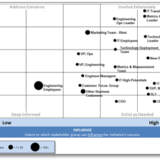Best-selling author, Mark Batterson, has said that “you can do nothing wrong and still do nothing right.”
When it comes to making teams effective, it could be that as far as you’re concerned you’re not doing anything wrong; and yet for some reason you’re still not getting the results that you want. It’s possible that the real problem is your failure to do what’s right.
Let’s look at five common assumptions about creating effective teams – things which on the face of it don’t seem wrong, and then consider what you should be doing instead.
Assumption no. 1 – TEAM – Together Everyone Achieves More
How often have you heard this? Maybe you have made it your mantra. This statement is flawed. Have you seen it yet? The problem is in the word “everyone.” Although many hands make light work, too many cooks can spoil the broth; and that’s not only about leadership.
Think of this very practical example. How many different people should be giving change out of the same cash register? The correct answer is ONE. The more people who use it, the better the chance that a mistake will be made. When one person is responsible for one drawer, the error rates go down.
So you can make your team ineffective by assuming that they should always work together. It’s not wrong when they do, but it might not be the right thing every time.
Assumption no. 2 – If you give a group of people a common objective, then they’ll work together to achieve it.
They might, but it would be naïve for you to assume that they will. That’s because of a thing called “what’s in it for me?” Gone are the days when people automatically worked together to a common end because they felt it was the right thing for them to do. Some people will, but many won’t. None wants to take the risk that the other will get ahead of them as a result.
What does this tell us about teams? It tells us that there has to be something else that bonds them together; something that will make them want to lay aside their personal ambitions because mutual cooperation will get them closer to their own individual goals. In other words, it’s not the team’s objectives that drive them. Instead it’s that their joint efforts will enable them to get what they want. Zig Ziglar once said that “If you help enough other people get what they want, then you can get what you want.” That is the glue that will pull a group of people together and get them to work for a common end.
Assumption no. 3 – Efficient teams are the most effective
Efficiency and effectiveness have been the Siamese Twins of the management world for decades. It’s almost impossible to imagine that one can exist without the other. But the truth is that they can and do, probably more often than you realize.
For example it may be more efficient to use email than to run upstairs or even down the hall to your colleague’s office; but it’s certainly less effective than meeting face-to-face. Think about two identically worded messages. If one is sent by a friend and the other by someone who doesn’t like you, then what you “hear” can be quite different.
If employees are reading their work email all the time, instead of spending focused time on their families, then this, too can stress their relationships and make life difficult at home. When they go back to work the next day, they’ll be thinking about their quarrels rather than their work.
Assumption no. 4 – Every team has slackers.
If you haven’t encountered this attitude yet, then you need to get out more. It’s practically universal. The opinion is that on a team, especially one where the people on it are less than enthusiastic about it, there will be a few who do most of the work, and the rest will drag their feet.
This assumption ties in with the second one. If people can’t understand what’s in it for them, then you are being unreasonable to expect them to put out because you think they should; and if you’re honest, then you’d have to admit that you would do exactly the same thing. However, assuming that a team will have slackers regardless of whether or not they are excited to be working on a given project or with a particular group of people is to harbor a suspicious attitude; and while you may have some grounds for this on occasion, this shouldn’t be the general rule.
Assumption no. 5 – Team members should be rewarded according to what they do.
This is the granddaddy of the five. It follows on from the last assumption. If you really believe that some people will contribute more than others, whether deliberately or by design, then you will automatically assign a psychological value to them. This lies at the root of evaluation systems. It’s how we get drawn into comparisons – one person against another. And where teams are concerned, it’s dangerous territory.
There’s nothing wrong with recognizing that different people make different contributions, or that what they do has greater or lesser value to the project. To do that would be to do nothing wrong. The right thing to do, however, is to recognize that those who don’t contribute as much, nevertheless still contribute. In other words, they are as much a part of the team as your most valuable player. That means that you would not have a team without them and, if for no other reason than that, they deserve to be rewarded equally with the other team members.
So there you have it: Five ways to do nothing right without actually doing anything wrong. It’s up to you. Will you choose to do what is right, or will you be content with the status quo?











